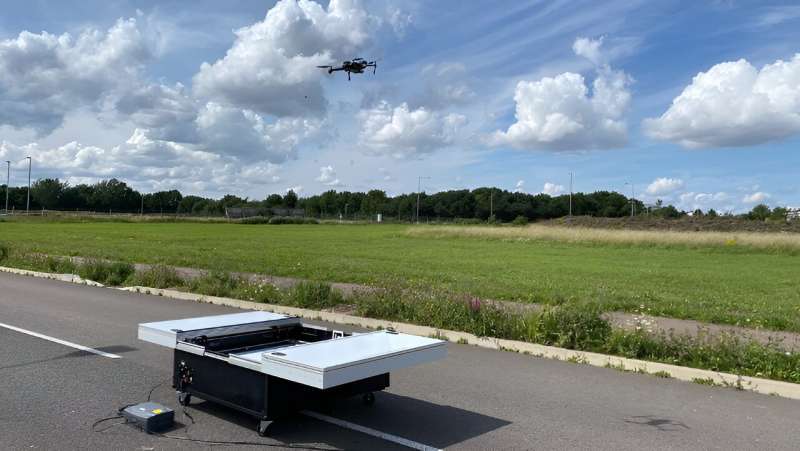This article has been reviewed according to Science X's editorial process and policies. Editors have highlighted the following attributes while ensuring the content's credibility:
fact-checked
peer-reviewed publication
trusted source
proofread
Drones delivering opioid overdose reversal kits could reach people more quickly than ambulances

Researchers from King's College London used real-world data of fatal opioid overdoses where a bystander was present to show that commercial-off-the-shelf drones could have reached 78% of cases within seven minutes—the benchmark time for the arrival of emergency services for Category 1 calls in England—a huge increase on the 14% reached by ambulances.
The researchers also found that by increasing the speeds of the drones and designing specialist cargo cradles, an estimated 98% of overdoses could be reached within seven minutes. The study, "An evaluation of naloxone transit for opioid overdose using drones: A case study using real-world coroner data" is published today (Oct. 13) in Addiction.
Naloxone is a life-saving drug which reverses or blocks the effect of opioids and rapidly restores normal breathing. "Take-home" naloxone kits are increasingly available from community pharmacies and drug treatment services, but a supply is not always readily accessible. Paramedics routinely carry naloxone and aim to attend emergencies in seven minutes, however this can be impacted by factors such as ambulance waiting times or the location of a patient, such as a music festival.
The modeling suggests the naloxone kit would be delivered to the site of the overdose, and the bystander would administer the medicine by nasal spray. Paramedics would attend the scene as usual and deliver the patient to urgent care.
"When a person overdoses and stops breathing, every second counts. Naloxone is very effective when given at the first signs of overdose and is easy to use. This study shows that drones can get naloxone to the site of an opioid overdose more quickly than paramedics in an ambulance. This could make a huge difference to people's survival," says lead author Dr. Caroline Copeland, from the School of Cancer & Pharmaceutical Sciences.
She added, "Bystanders leaving the scene of overdoses occurs due to fear of prosecution as illegal drugs are often present at the scene. If naloxone can reach those who need it before paramedics and law enforcement, bystanders may be encouraged to help before leaving."
Dr. Paul Royall, from the School of Cancer & Pharmaceutical Sciences, first author and co-founder of Drone Mat Lab said, "Drones have the potential to revolutionize medicine delivery. A robust drone network can deliver naloxone kits efficiently. The drones under evaluation have collision detection technology so they don't fly into buildings or through air space, and are deployed using a standalone drone station."
More information: Paul G. Royall et al, An evaluation of naloxone transit for opioid overdose using drones: A case study using real‐world coroner data, Addiction (2023). DOI: 10.1111/add.16361





















